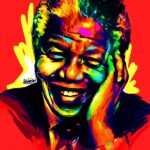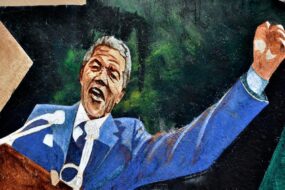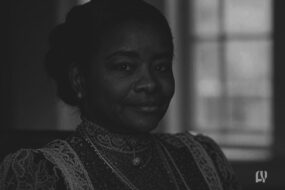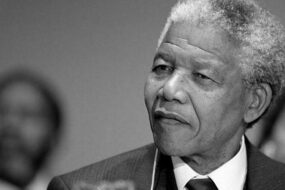
“The Secret South African Soldier: Uncovering the Sinister Truth Behind Project Coast”
What if you discovered a secret so sinister, even speaking about it could land you in prison? Imagine being a soldier, forced to undergo experimental treatments that blurred the lines between human and machine. Welcome to Project Coast,a clandestine South African military experiment that pushed the boundaries of science and ethics to unimaginable extremes. This is the story of a nation that secretly played with fire, and the people who got burned.
It’s the 1980s, and the apartheid regime in South Africa is facing mounting international pressure. the government, desperate to maintain control, turns to its military to develop new technologies that could give them an edge over their enemies. The South African Defense Force (SADF) and the South African police (SAP) join forces to create a top-secret research and development program, code-named Project Coast. Officially, the project aims to develop new chemical and biological agents for defensive purposes. Though, as we’ll soon discover, the truth is far more sinister.
Project Coast was led by the enigmatic Dr. Wouter Basson,a brilliant chemist with a passion for innovation. Basson, also known as “Dr. Death,” would become the mastermind behind some of the most heinous experiments in modern history.Under his guidance, scientists at project coast began developing an arsenal of deadly chemicals and biological agents, including nerve gas, poisoned food, and even a plan to create a “chemical toilet” that could silently eliminate enemies. The project’s scope was vast, with a network of secret laboratories, testing facilities, and safe houses scattered across the contry.
As the project progressed, the SADF and SAP began recruiting unsuspecting soldiers and civilians to participate in these experiments. Many were lured with promises of employment, medical treatment, or adventure. Others were duped into thinking they were part of a routine medical study. What they didn’t know was that they were about to become human guinea pigs in a twisted game of science and survival. These test subjects were subjected to inhumane treatments, including injections with unknown substances, exposure to toxic chemicals, and forced participation in psychological experiments designed to break their minds.
One of the most shocking aspects of Project Coast was the development of so-called “chemical soldiers.” These soldiers were injected with massive doses of stimulants, including amphetamines and other psychoactive substances, to enhance their performance on the battlefield. The goal was to create super-soldiers who could withstand extreme stress, fatigue, and pain. However, the results were catastrophic. Many of these soldiers became addicts, while others suffered from severe mental health issues, including psychosis and suicidal tendencies.
as Project Coast continued to expand, its activities became increasingly shrouded in secrecy. The government and military leaders involved in the project took extreme measures to conceal their involvement, using coded messages, secret meetings, and even fake companies to launder their activities. The project’s budget was massive, with estimates suggesting that over R 100 million (approximately $7 million USD at the time) was spent on research and development.But Project Coast wasn’t just about creating deadly agents or super-soldiers. The project’s true purpose was far more sinister. The apartheid regime wanted to use these technologies to crush dissent and opposition, both within south Africa and beyond. They planned to use these deadly agents to eliminate anti-apartheid activists, journalists, and anyone else who threatened their grip on power. The targets included Nelson Mandela, the future president of South Africa, and other prominent anti-apartheid leaders.
The project also involved the development of a “third world war” strategy,which included plans for a chemical and biological war against neighbouring countries. The South African government believed that by using these agents, they could gain a strategic advantage over their enemies and maintain control over the region. However, this strategy ultimately backfired, as the international community began to take notice of the project’s activities.
In the late 1980s,Project Coast began to unravel.A series of investigative reports by the South african press exposed the project’s existence,and soon,the international community was outraged. The United Nations and other global organizations condemned the project, calling for an immediate halt to its activities. In 1990, the South African government was forced to shut down Project Coast, and many of its leaders, including Dr. Basson, were arrested and charged with various crimes.
However, the legacy of Project Coast continues to haunt South Africa to this day. Many of the test subjects and soldiers who participated in the project still suffer from physical and mental health issues. The country’s government has never fully acknowledged the project’s existence, let alone provided adequate compensation to those affected. The story of Project Coast serves as a dark reminder of the dangers of unchecked power and the importance of holding those in authority accountable for their actions.
in the years following the project’s shutdown, South Africa has made significant strides in uncovering the truth about Project Coast. In 1993,the Truth and reconciliation Commission (TRC) was established to investigate human rights abuses during the apartheid era,including those committed under Project Coast. The TRC’s findings confirmed the existence of the project and the atrocities committed under its auspices.
Today,the story of Project Coast serves as a cautionary tale about the dangers of science without ethics and the importance of openness and accountability in government. As we reflect on this dark chapter in South African history, we are reminded of the power of investigative journalism and the importance of a free press in holding those in power accountable. The legacy of Project Coast will continue to haunt South Africa for generations to come, but it also serves as a reminder of the importance of learning from the past and working towards a more just and equitable future.
#SouthAfricanSecrets #HiddenHistory #MilitaryExperiments #GovernmentProjects #classifiedsouthafrica #InfographicStory #TrueStory #AfricanHistory #ProjectCoast #ApartheidRegime #ChemicalSoldiers #biologicalagents #SinisterScience #SurvivalStories #TruthAndReconciliation #SouthAfricanHistory
<img class="bimage_class" src="https://campusstore.co.za/wp-content/uploads/2025/04/9cuyer.jpg" alt="The Forgotten Heroine of Soweto: The Unyielding Spirit of Hector Pieterson’s Sister,antoinette Sithole
Imagine being just 17 years old,standing amidst a sea of chaos and violence,and witnessing the brutal murder of your 12-year-old brother in the streets of Soweto. The year was 1976, and South Africa was on the cusp of a revolution that would shake the very foundations of the apartheid regime. On that fateful day, June 16th, Antoinette Sithole’s life was forever etched with the memories of bloodshed, courage, and the unrelenting struggle for freedom. as we unravel the story of this remarkable young woman, we will journey through the tumultuous landscape of South Africa’s history, where the cries for equality and justice would eventually bring the mighty apartheid machine to its knees.
It was a typical Wednesday morning in the Soweto township,with students pouring out of their schools,eager to join the planned protest against the imposition of Afrikaans as the primary language of instruction. The South African government,under the leadership of the notorious apartheid regime,had decreed that Afrikaans would be the language used in schools,a move that was met with fierce resistance from the black community. The students, backed by their teachers and parents, saw this as a blatant attempt to suppress their cultural identity and undermine their education. As the protesters marched through the streets, they were met with brutal force by the police, who were resolute to crush the dissent. Antoinette Sithole, a high school student at the time, had just finished her exams and was walking home when she heard the commotion.
As she turned a corner,she saw a group of students,including her brother Hector Pieterson,running towards her,pursued by the police. In a split second, chaos erupted, and the sound of gunfire filled the air. Hector, just 12 years old, was shot and fell to the ground, mortally wounded. Antoinette’s world came crashing down as she watched in horror as her brother was lifted into the arms of a fellow student, Mfuniselwa Zibi, and carried away from the scene. The image of Hector’s lifeless body, captured by photographer Sam nzima, would become an enduring symbol of the Soweto Uprising, sparking outrage and galvanizing the anti-apartheid movement worldwide. As Antoinette struggled to come to terms with the trauma she had witnessed, she was thrust into the midst of a revolution that would change the course of South African history.
In the aftermath of the Soweto Uprising, the apartheid government responded with brutal force, deploying military units to quell the dissent. the streets of Soweto ran red with the blood of the innocent, as the police and military brutally suppressed the protests, leaving scores dead and many more injured. Antoinette, alongside other survivors, continued to mobilize against the regime, using her experience to fuel her determination to fight for justice. As the world began to take notice of the atrocities committed in South Africa, the international community started to exert pressure on the apartheid government to reform. The Soweto Uprising marked a turning point in the struggle against apartheid, as the regime’s brutal response to the protests galvanized opposition both domestically and internationally.
As the years went by, Antoinette Sithole’s story became somewhat lost in the annals of history, overshadowed by the more prominent figures of the anti-apartheid movement. Though,her bravery and resilience in the face of unimaginable tragedy have left an indelible mark on the history of South Africa. Despite the trauma she endured, Antoinette continued to work tirelessly, promoting education and advocating for the rights of the youth. Her story serves as a testament to the power of the human spirit, as she transformed her pain into a beacon of hope for future generations. As we reflect on Antoinette’s journey, we are reminded that even in the darkest of times, there are individuals who embody the courage and conviction to challenge the status quo and fight for a better tomorrow.
The legacy of the Soweto Uprising continues to resonate in modern-day South Africa, as the country grapples with the ongoing legacies of apartheid, including inequality, poverty, and social injustice. The events of june 16th, 1976, marked a watershed moment in the country’s history, as the collective actions of ordinary people, including Antoinette Sithole, helped to bring an end to the apartheid regime. As we look to the future, it is imperative that we remember the sacrifices made by individuals like Antoinette, who, in the face of unimaginable adversity, stood firm in their commitment to justice and equality.Their stories serve as a powerful reminder of the ongoing struggle for human rights and the importance of continued activism in the pursuit of a more just and equitable society.
As we conclude this account of Antoinette Sithole’s remarkable story, we are reminded that history is not just a collection of dates and events, but a living, breathing testament to the human experience. It is through the stories of individuals like Antoinette that we gain a deeper understanding of the complexities and challenges that have shaped our world. As we reflect on the past, we are inspired to continue the fight for a brighter future, where the rights and dignity of all individuals are respected and protected.#InfographicStory #SouthAfricanHistory #SowetoUprising #Apartheid #AntiApartheidMovement #HectorPieterson #AntoinetteSithole #TrueStory #HistoryMatters #HumanRights #SocialJustice #neverforget #Resistance #Activism #EqualityForAll #GlobalFigures #DidYouKnow #HistoryNerd #BlackHistory #SouthAfrica #ApartheidRegime #June16th #Soweto #YouthEmpowerment #EducationMatters”>









